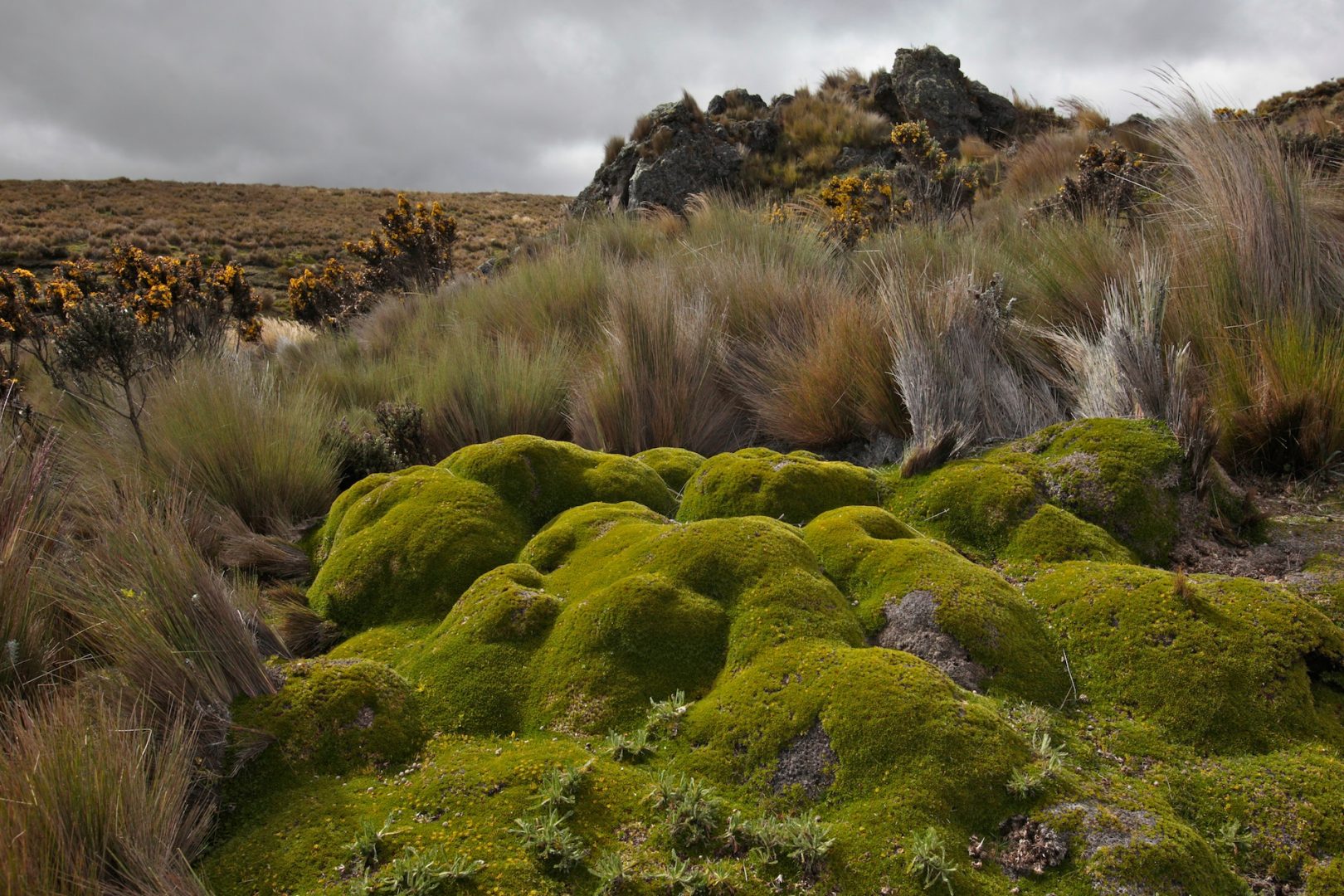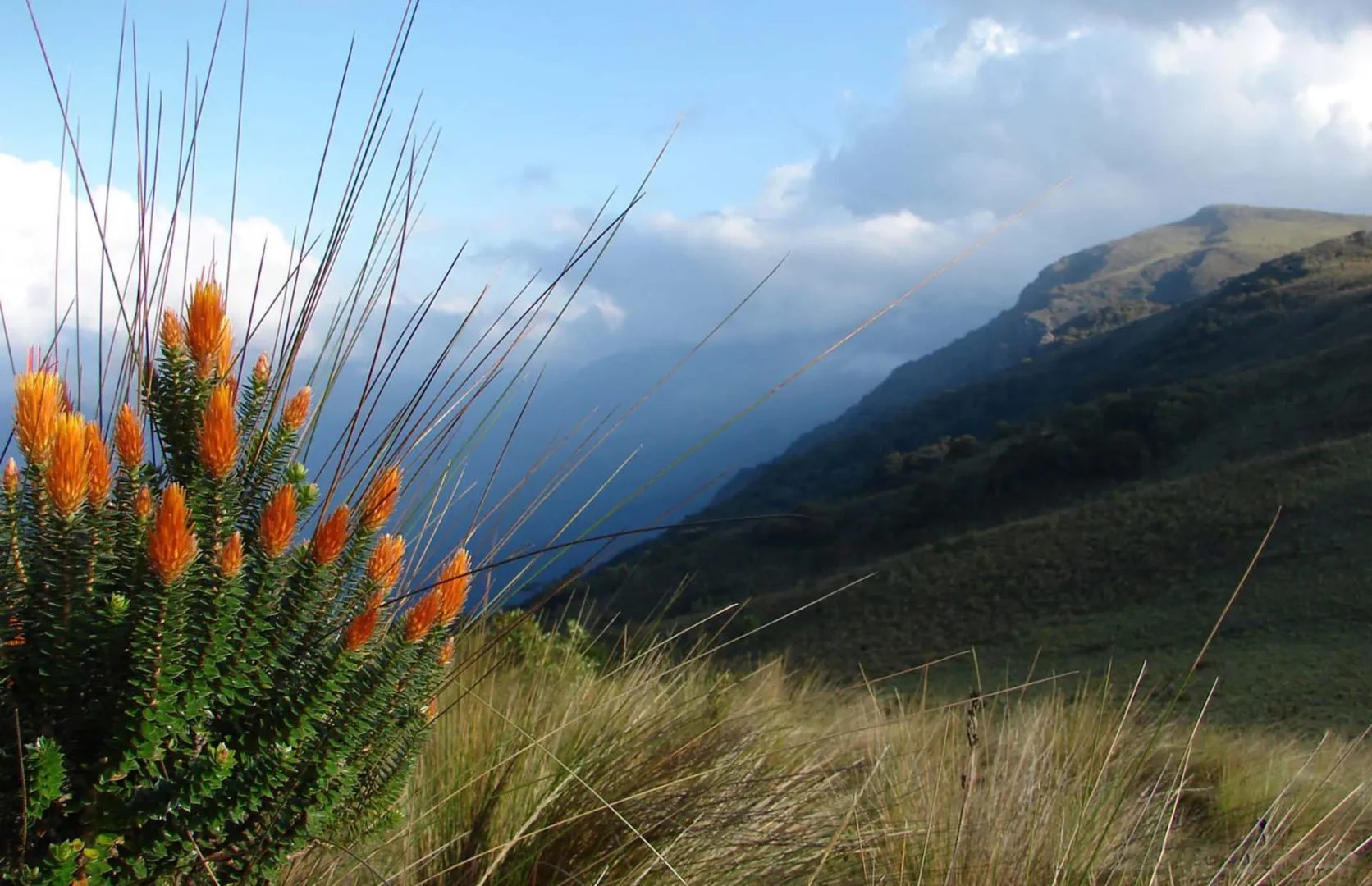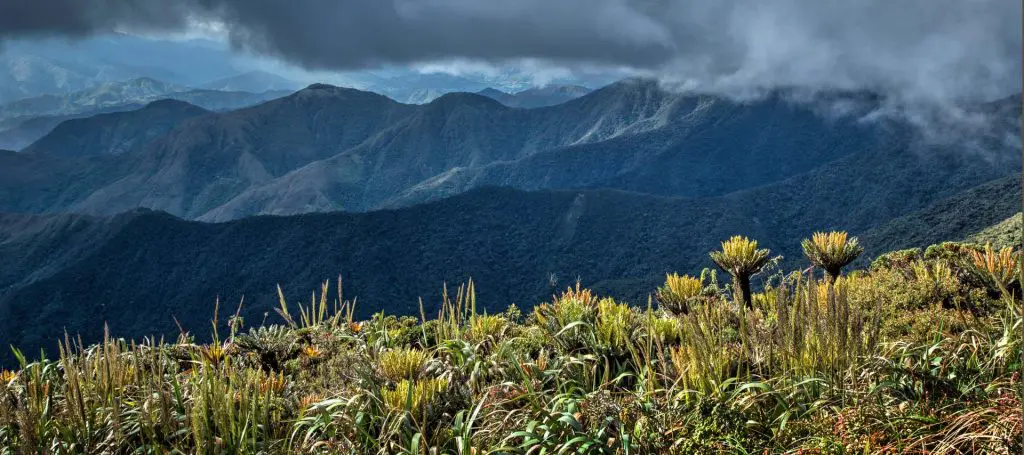Unique High Altitude Grassland that Secures Clean Water for Millions
Páramo is only found in the Andes of Ecuador, Peru, and Colombia, along with a few small areas in Central America
The altitudinal limits for Páramo are between the timberline (about 10,000 feet) and the snowline (about 16,000 feet) with an average rainfall of about 80 inches per year.

In the last few years, botanical researchers have come to the conclusion that the Andean páramo is very likely the fastest evolving biodiversity hotspot on Earth. This is because species here evolved within a highly varied landscape of glacier-formed valleys and plains with lakes, peat bogs, and wet grasslands interspersed with shrub-land and forest patches.
86% of flowering plant species are endemic to this astonishing ecosystem and found nowhere else.
Due to its high altitude, species have also been forced to adapt to low atmospheric pressure, intense ultraviolet radiation, and the drying effects of strong winds. Páramo is not only the fastest evolving place, it also boasts unusually high numbers of endemic species.

The most famous resident of the páramo – the Andean Condor, the world’s largest bird.
The páramo grasslands contain many rare or endangered species.
Species abound including the endangered mountain tapir, the woodland Oldfield mouse, Apolinar’s wren, the black-breasted puffleg, and the Bogotá rail.
The páramo also provides shelter and habitat to several reptiles and amphibians, including the Colombian lightbulb lizard, poison dart frogs, rocket frogs, and the black water frog.

Páramo acts as a sponge, soaking up water and delivering it to forests and communities below year-round.
Recently, municipal governments have shown a greatly increased interest in protecting these ecosystems in order to secure clean water for their people at lower elevations. Nature and Culture’s FORAGUA program is leading the way by building win-win-win partnerships in which water utilities, consumers, and the ecosystem all benefit when páramo is placed into protected status.


Páramo plays an important role in the water supply for cities at lower elevations, but it remains threatened in many areas due to deforestation and overgrazing.



